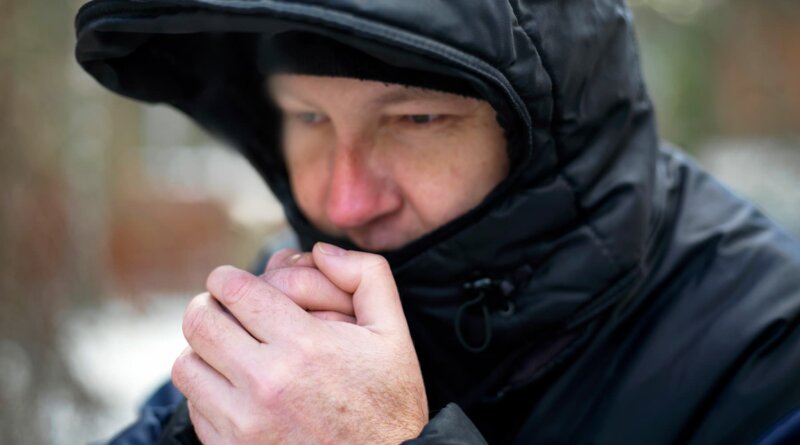How to Breathe Easier in Winter
Nov. 11, 2022 — Karen Ruckert doesn’t look forward to wintertime. The 69-year-old in Far Rockaway, NY, has chronic obstructive pulmonary disease (COPD), which makes breathing difficult at the best of times, especially during walking. But the cold air makes everything worse.
“Cold takes my breath away — literally,” says Ruckert.
Nava Myers, a 31-year-old dental hygienist, has a similar problem. She has asthma. In cold weather, her lungs constrict. “If I’m walking, I have to stop, catch my breath, and I wheeze. I feel the tightness and constriction as soon as I walk out the door.”
People with respiratory disorders (like asthma, COPD, sinusitis, or allergies) or who may be dealing with long-term effects of COVID-19 often find breathing difficult in colder temperatures.
Jodi Jaeger, a respiratory therapist at Ascension SE Wisconsin Hospital,
says the low temperature and low humidity affect the airways.
“Cold, dry air irritates the lungs, causing the muscles around the airways to constrict so that the airways actually narrow,” she says. The technical term for the disorder is bronchospasm.
The narrow airways mean there’s less space for air to enter and exit. Also, mucus within the airways tends to dry out and the narrower airways make it more difficult to get rid of it. So the mucus can clog the airways.
“This can lead to shortness of breath, a sense of constriction or tightness, sometimes a burning sensation in the chest, and often wheezing or coughing,” Jaeger says.
Even healthy people exercising rigorously in very cold temperatures can put themselves at risk of these symptoms.
Fortunately, there are many simple self-care measures to reduce the risk and manage the symptoms.
Cover Your Face
Jaeger advises people to dress warmly and cover their faces in cold weather when they are going outdoors.
“In particular, it’s extremely important to cover your mouth and nose with a scarf or a cold-weather face mask — not a thin surgical ‘COVID-type’ mask — or a neck gaiter that comes up over the face,” Jaeger says
This helps warm the air around the nose and also holds some moisture. Even though some people find it annoying when their scarf gets moist, you’re breathing in moisture instead of dry, cold air.
Ruckert covers her face when she walks in cold weather but leaves a little area around the nose slightly uncovered because her glasses get steamed up so she can’t see where she’s going.
Myers wraps her neck area in a “circle scarf.” She also wraps her ears. “I feel the cold even in the ears, so I wear a really good, bundly scarf that covers my throat, mouth, nose, and ears.”
Breathe Through Your Nose
Breathing through the nose is better than breathing through the mouth because the nose is a “better humidifier than the mouth,” says Jaeger. “If you combine breathing through the nose with face covering, that should go a long way toward preventing the tightness in the chest, the shortness of breath, and the cold-induced bronchospasm.”
Avoid Rigorous Outdoor Exercise in Very Cold Weather
Exercising makes it harder to breathe because when you’re exercising, you’re increasing the amount of air you’re breathing, compared to when you’re at rest, Jaeger explains. “That causes the tightness and burning sensation and can ultimately lead to wheezing.”
Even in people without lung disease, rigorous outdoor exercise in extremely cold weather — especially for more than 30 minutes — can trigger symptoms, which can last for as long as 24 hours.
If you really love vigorous outdoor exercise like running, make sure you’re dressed properly and well-hydrated. And consider reducing either the intensity or the time of your workout — or both, Jaeger advises.
Ruckers and Myers both avoid walking outdoors in the cold weather as much as possible.
“And if I do go outside in the cold, if I’m trying to walk with my friends, I have to stop and catch my breath,” Myers says.
Myers can’t walk and talk at the same time in cold weather. “I might be trying to tell a story, but there comes a point when I have to stop, catch my breath, and finish the story when I get home.”
Keep Hydrated
The air, both outside and inside, is dryer during cold weather, Jaeger notes. “Drinking plenty of fluids will help the body stay hydrated so when you go outside, your lungs will be better protected and your mucus will be less thick and less likely to get stuck.” She also suggests using lotion and lip balm so the skin and lips don’t dry out.
She recommends hot or warm herbal tea or water with lemon and raw honey. A bonus is that certain teas, like peppermint or chamomile, can also soothe the airways.
Take Care of Your Indoor Environment Too
During the winter, people spend more time indoors, and there are things you can to do make your indoor environment more friendly to respiratory health. For example, be extra careful to keep your home clean and free of dust and other allergens that can affect breathing.
Jaeger recommends using a humidifier to counterbalance the dryness in the air that can often come as a result of using radiators.
“That way, when you’re in your home, you’re building up the humidification within the body so that when you go outside, you’re not at a fluid deficit,” she says.
Make sure the humidifier is regularly cleaned so that bacteria and mold don’t build up and get released into the air, she warns. Follow the instructions on the package or use vinegar and water for cleaning.
Some portable humidifiers can be used with small disposable water bottles. They can be taken in the car, brought to the office, or used during travel. Using a disposable bottle prevents bacteria and mold from building up.
Ruckert puts a pan of water on top of the radiators. As the water evaporates, the air becomes moister.
Other than air quality, you can help your breathing by using essential oils, such as eucalyptus, peppermint, and tea tree oil. “You can rub it on yourself — somewhere where you can smell it — or put it on a cotton ball next to your pillow,” Jaeger says.
Medications to Assist With Breathing
People with respiratory conditions typically take medications to manage their conditions. Some are used regularly, while others are “rescue” medications to be used only when symptoms arise.
“Take your prescribed rescue inhaler before exposure to the cold air,” Jaeger advises. Bring the medication with you in case you need it while outdoors.
Ideally, people with known respiratory conditions should have an action plan with their health care provider, Jaeger says. Most people with these conditions can measure the amount of air expelled from the lungs using a device called a peak flow meter. “You should know when your medications may need to be adjusted and when to contact your provider.”
If you’ve never had difficulty breathing and you’ve just developed the problem, you should take it seriously, especially if simple self-care measures don’t work, she emphasizes. “And if you have severe breathlessness or wheezing and can’t complete your sentences, you need to get medical attention right away.”
Myers takes several different types of inhalers, some consistently and others as needed. “I feel they don’t make a big enough difference in cold weather, and their cost is exorbitant, so I tend to just avoid going out in the wintertime,” she says.




